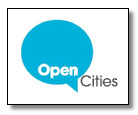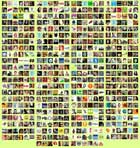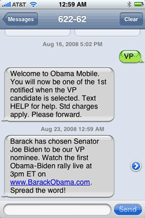 The first-ever Evergreen Apps Competition came to a close last night in Seattle as we recognized the top applications developed over the last six months with government open data. Top honors went to Living Voters Guide with other prizes for WhichBus, Trash Backwards and Food Inspector.
The first-ever Evergreen Apps Competition came to a close last night in Seattle as we recognized the top applications developed over the last six months with government open data. Top honors went to Living Voters Guide with other prizes for WhichBus, Trash Backwards and Food Inspector.
I was one of the judges for the event, and, I have to admit, I had a lot of fun downloading and testing the apps on Android and iPhone platforms, as well using some apps on the web itself. Full results are posted on the Evergreen Apps website and on Geekwire.
“Apps competitions” might seem a little passé these days. It sure seems as if there have been dozens of them, starting with the original Apps for Democracy in the District of Columbia in 2008. New York City has had at least three renditions of their Big Apps contests and San Francisco continues to innovate with a whole catalog of apps.
What makes this one different? And where should we be going with Government data and apps contests in the future?
 Evergreen Apps is different because it was a joint effort by the City of Seattle, King County and the State of Washington. Three governments at different levels, multiple different open data sites and $75,000 in prizes. Plus, of course, it was held in Seattle, center of the technology world, with over 100,000 people employed by companies ranging from Microsoft to Cozi to Amazon to Google to Socrata to Urbanspoon.
Evergreen Apps is different because it was a joint effort by the City of Seattle, King County and the State of Washington. Three governments at different levels, multiple different open data sites and $75,000 in prizes. Plus, of course, it was held in Seattle, center of the technology world, with over 100,000 people employed by companies ranging from Microsoft to Cozi to Amazon to Google to Socrata to Urbanspoon.
In return for the prize money, the rules stipulate the apps must be maintained an enhanced for a year. That, hopefully, will give some longevity to these apps. Alas, many of the results of apps contests elsewhere have resulted in dead ended apps which no longer work for a whole variety of reasons ranging from changes in the underlying data structure to developers who go on to other things.
A huge issue is sustainability. One of my very favorite apps from the original Apps for Democracy contest – “Stumble Safely” which maps crime around your present geographic location – appears to be long dead.
Developers and their startup companies can’t live on coding alone – cash really REALLY helps, but apps built on government open data are hard to monetize.
Another huge problem is non-portability. An app built in Seattle with data.seattle.gov information works in Seattle, but not in LA or Chicago or Podunk Center. We need either much better standards for the underlying datasets, along the lines of Google’s GTFS for transit data. Many transit agencies have adopted this format because increasing their ridership is core to their business, and using the standard advances that goal.
As an alternative, we could use a schema and data interchange process to mask the differences in data between different cities, counties and states.
 I have great hopes for Socrata, a Seattle-based technology company which hosts the federal data.gov, data.seattle.gov, and hundreds of other government open data sites. They are one of the movers behind cities.data.gov, a first attempt at combining datasets from multiple cities.
I have great hopes for Socrata, a Seattle-based technology company which hosts the federal data.gov, data.seattle.gov, and hundreds of other government open data sites. They are one of the movers behind cities.data.gov, a first attempt at combining datasets from multiple cities.
If cities.data.gov or maybe a future states.data.gov or even restaurantinspections.data.gov can be made real, then an app writing against those open data sites would work anyplace in the world which contributes data.
 Another huge problem is simply the lack of governments who participate. Sure, there are 176 federal government agencies who make data open, thanks to the commitment of the Obama Administration, the United States CTO Todd Park, his Deputy Chris Vein, U. S. CIO Steve Van Roekel and data.gov evangelists like Jeanne Holm. But only 19 cities and counties in the United States, and only 34 states have open data sites. See the list here. And many of those have incomplete or only a few datasets.
Another huge problem is simply the lack of governments who participate. Sure, there are 176 federal government agencies who make data open, thanks to the commitment of the Obama Administration, the United States CTO Todd Park, his Deputy Chris Vein, U. S. CIO Steve Van Roekel and data.gov evangelists like Jeanne Holm. But only 19 cities and counties in the United States, and only 34 states have open data sites. See the list here. And many of those have incomplete or only a few datasets.
When are local and state governments going to “get it” that transparency and open data are a way to enlist a wide site of private companies and developers into helping them better serve their constituents?
Finally, there is the abysmal situation with transparency in lawmaking. Most state legislatures and city/county councils and commissions put proposed laws and ordinances on their websites, but in PDF format or non-machine readable format, making them almost impossible to consume with apps. Is this stupid, shortsighted or maybe intentional? A positive development here is the recent launch of congress.gov, which the Sunlight Foundation hails as putting much more machine-readable bulk data online.
So where do we go from here? My suggestions:
- Initiate a nationwide or at least statewide (for individual states) effort to standardize the format of the open data, or create data interchange software to mask the differences in the underlying data, as Socrata is trying to do. Collaboration such as that shown by a City, County and State at Evergreen Apps is a great step forward on this path.
- Establish statewide and GSA contracts with private companies to host the data. The State of Washington has done that and it ismuch easier for cities and counties in that state to build their own open data sites. Data.seattle.gov was live two months after we started the project, by using such a contract.
- Pass laws which mandate all data produced by a city, state or county which can be on an open data site is put there. New York City leads the way on this.
- Also mandate city, county and state legislative processes be open with machine-readable data, as congress.gov is starting to do.
In the end, of course, it all comes down to visionary leadership.
 President Barak Obama was really visionary in demanding open data and transparency from the Federal Government on his first day in office, on January 21, 2009. Then federal CIO Vivek Kundra and CTO Aneesh Chopra carried that ball forward. Mayor Mike McGinn in Seattle launched data.seattle.gov shortly after taking office in 2010 and I was proud to support him in that as Seattle CTO. Other visionary leaders range from Mayor Gavin Newsom in San Francisco to U.S. Deputy CTO Chris Vein in the White House to Mayor Michael Bloomberg in New York City.
President Barak Obama was really visionary in demanding open data and transparency from the Federal Government on his first day in office, on January 21, 2009. Then federal CIO Vivek Kundra and CTO Aneesh Chopra carried that ball forward. Mayor Mike McGinn in Seattle launched data.seattle.gov shortly after taking office in 2010 and I was proud to support him in that as Seattle CTO. Other visionary leaders range from Mayor Gavin Newsom in San Francisco to U.S. Deputy CTO Chris Vein in the White House to Mayor Michael Bloomberg in New York City.
But, alas, you can’t legislate leadership. You can only hope voters recognize it and cast their ballots for visionary candidates, and those elected officials, in turn, choose visionary CIOs.
We’ve got a great start on the brave old world of Government Transparency, and, with initiatives like Evergreen Apps, we’ll continue to push the “open data” ball forward.

 (This post originally published July 8, 2012)
(This post originally published July 8, 2012)








